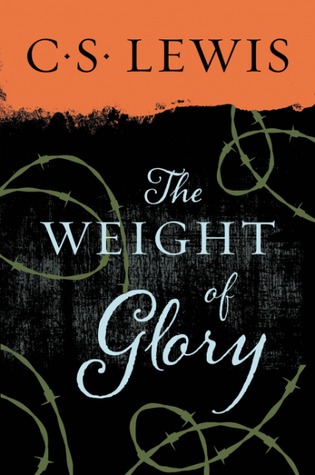“We do not want merely to see beauty, though, God knows, even that is bounty enough. We want something else which can hardly be put into words—to be united with the beauty we see, to pass into it, to receive it into ourselves, to bathe in it, to become part of it. . . . At present we are on the outside of the world, the wrong side of the door. We discern the freshness and purity of morning, but they do not make us fresh and pure. We cannot mingle with the splendours we see. But all the leaves of the New Testament are rustling with the rumour that it will not always be so. Someday, God willing, we shall get in. . . . [Y]ou must not think that I am putting forward any heathen fancy of being absorbed into Nature. Nature is mortal; we shall outlive her. When all the suns and nebulae have passed away, each one of you will still be alive. Nature is only the image, the symbol; but it is the symbol Scripture invites me to use. We are summoned to pass in through Nature, beyond her, into that splendour which she fitfully reflects. And in there, in beyond Nature, we shall eat of the tree of life.” C S LEWIS

C. S. Lewis, “The Weight of Glory,”
sermon preached at evensong in the Oxford University Church of St Mary the Virgin,
June 8, 1941.
Published in The Weight of Glory and Other Addresses, available in many editions.
C. S. Lewis’s sermon “The Weight of Glory” is a paradigmatic sermon about beauty. It is also a paradigm for how to preach beautifully, addressing a sermon to the aesthetic sense.
Glory is the Bible’s word for the sort of beauty that is particular to God. Beauty is a quality of being, but — unlike other transcendentals (such as truth or goodness) — beauty is an expressive quality. When a creature’s being in all its goodness is displayed or revealed, that quality of offering, of attracting and summoning, is precisely what beauty is. In the Bible, when God shows Himself to people so that His Being is revealed in this way, the word used for that showing is glory. Think of the glory cloud descending on Mt Sinai, or on the tabernacle, or on the temple. Think of the fullness of the glory of God manifest in Jesus.
In 2 Corinthians, Paul suggests the shocking idea that in Christ this divine glory becomes a communicable attribute in which we may participate. That is the context for his promise that there is a “weight of glory” stored up for us, a promise which is Lewis’ text in this sermon. So the sermon really is about beauty – God’s own glorious beauty and the invitation for us to share in that beauty. Lewis talks about glory both in terms of fame, reminding us that as children of God we should delight in His “well done” the way toddlers delight in praise from their parents, and also in terms of luminosity, promising that our relationship with God and with the world around us will be lit up in the life to come as a function of what Paul calls our transformation “from one degree of glory to another” (though Lewis does not quote that line).
The sermon is also an example that every preacher should study of how to address a congregation’s hunger for beauty, rather than only their reason. To put it in Lewisian terms, it is an example of how to preach into the chest rather than only to the head. Lewis acknowledges that he is doing this deliberately when, at one point in the sermon, he asks the congregation if it seems that he is “weaving a spell.” He says: “Perhaps I am; but remember your fairy tales. Spells are used for breaking enchantments as well as for inducing them.” He suggests that we have been under an enchantment that has led us to forget our true home, to believe that this world is all there is, and to silence the “inner voice” suggesting something otherwise. As Lewis does so often, he is attempting to awaken our longing, and longing is not an act of the reason, but of the imagination and the will. It is an aesthetic act.
Arend Smilde has published some helpful notes about Lewis’ references in this sermon. Look for those helps here: http://lewisiana.nl/essayquotes/index.htm.